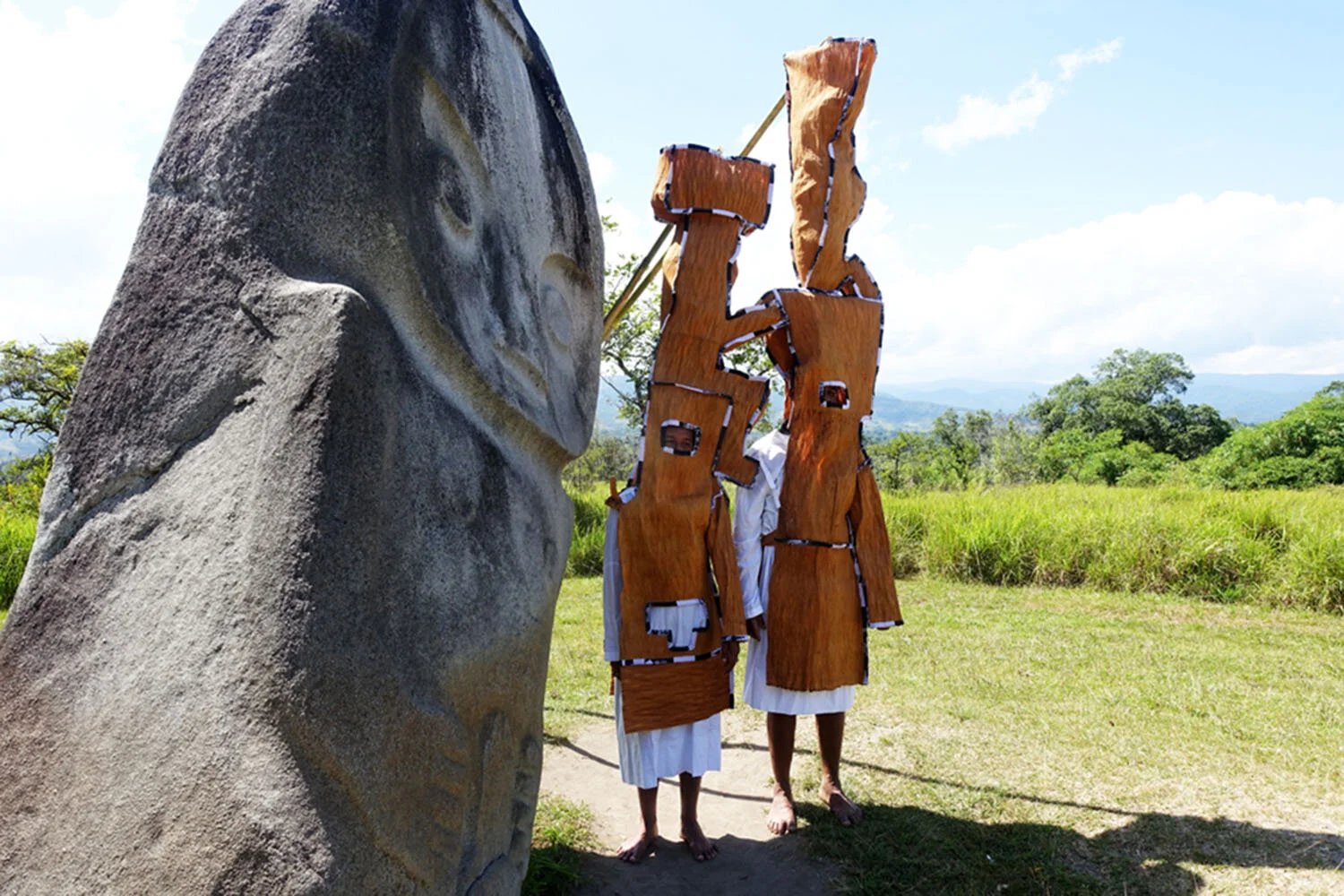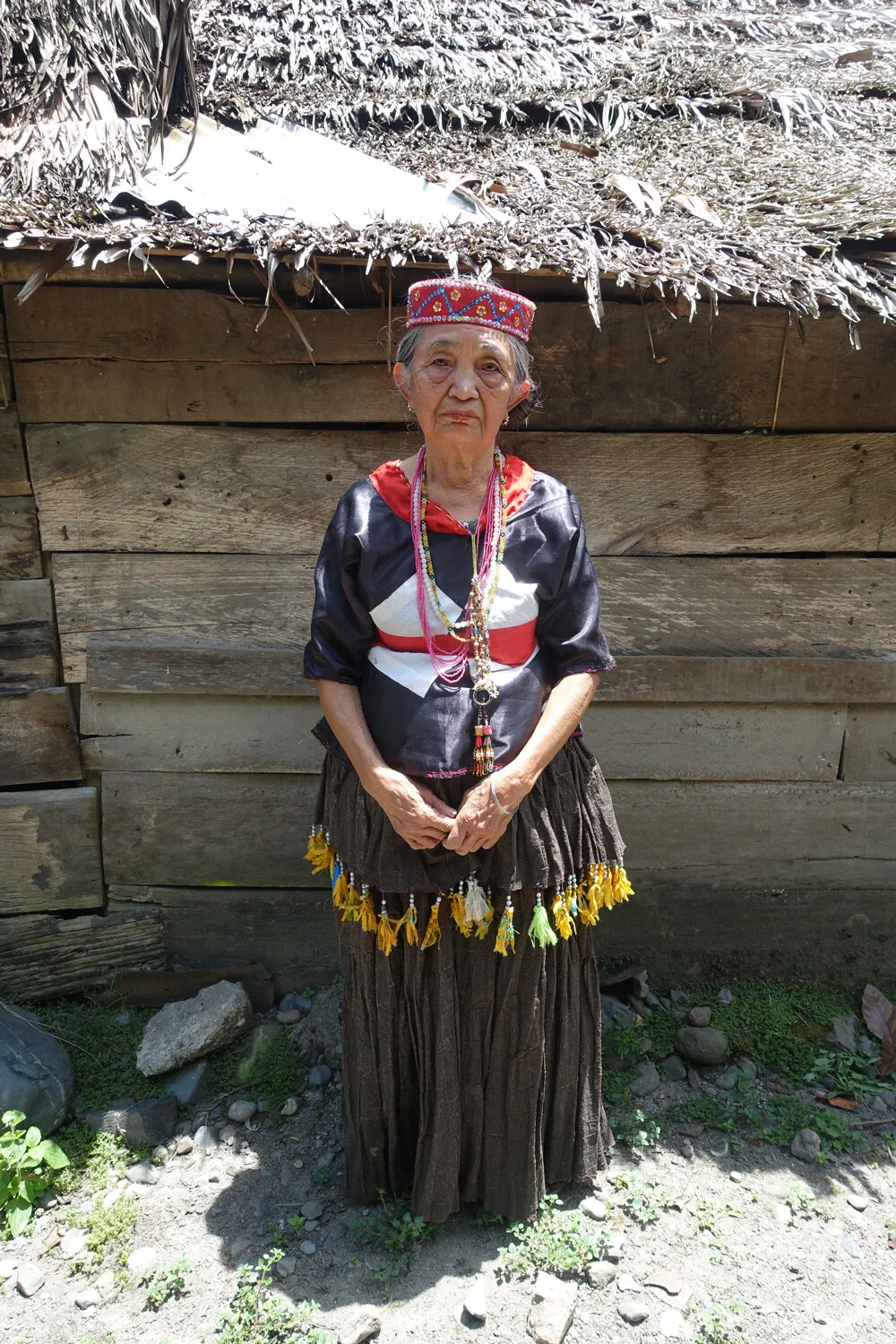Barkcloth, Indonesia
Indonesia is probably the country with the most extreme spectrum of sartorial coverings or clothing in the world. In Banda Aceh, the westernmost and only province that practises Sharia law, bodies must be almost totally covered. In the eastern-most province Papua, people using little coverings as many tribal people still wearing penis sheaths or grass skirts. These extremes in clothing as an expression of the country’s uniqueness and cultural richness is unfortunately in decline.
Barkcloth (Fuya), is a specific non-loomed fabric that carries a rich account of Indonesian history. Barkcloths cannot be washed, while sarongs, loincloth and tunic blouses could be worn on a daily bases no longer than seven or eight months. Yet, its production is much faster than loomed cloth, taking around ten days. The introduction of woven textile made barkcloth now an almost extinct process of clothing manufacture. The Weltmuseum collection in Vienna holds hundreds of barkcloth coverings. They were mostly collected at the end of the 19th century and documented the material’s social patterns and its decline through Christian contacts, Islamic influences and the unavoidable processes of modernisation. Although the Weltmuseum in Vienna and the Tropen Museum in Amsterdam have extensive collections of bark cloths, nowadays there is little attention to this important item of Indonesian material culture. It is even more rare to come across barkcloth collection in Indonesia as the usual textile focus is on batik and ikat.
Barkcloth worn in Lemah Bada. Photo by Mella Jaarsma
Jaarsma working on barkcloth
The first persons wrote extensively about the barkcloths were two scholarly Dutch protestant missionaries N. Adriani and Alb. C. Kruyt in 1905 (Geklopte Boomschors als Kleedingstof op Midden- Celebes), although their documentation included a biased view from an authoritative position. According to them, barkcloth was the original clothing material of the entire Indonesian archipelago before woven textiles were invented or introduced. As missionaries in the inland areas, they looked into the local meaning of barkcloth designs and the process of production, and eventually had to abandon the ritual related barkcloth making and painting practices. During the last decades, most of the barkcloth sacred objects have been eliminated with the increasingly Christianization mostly inland and Islamization in the coastal areas. Nevertheless, the production of finer barkcloth, like men’s headscarves, ponchos and shoulder bags, painted with symbolic designs were still used in major rituals nowadays, which take place around puberty, marriage, death, yearly harvests and for healing.
Barkcloths are still produced and worn in Lemah Bada, Sulawesi, where the missionaries were stationed. One of the elderly women shared over an interview that her mother made barkcloths instead of going to school and following colonial influences. Barkcloth production became a form of resistance aimed at holding on to local traditions and beliefs.
Mella is an artist based in Yogyakarta, Indonesia. For the last twenty years, she has been examining habits of clothing-related social issues. Mella noted, “Our clothes are like a facade in which we can hide or appear, inhabit or vacate. Especially during the last century people used clothing as a state of control and have pushed others to change their clothing habits, with the aim that clothing is part of a policy to bring change in mentality; to ‘civilize’ or be chaste, to adopt a religion, to restrict, but also to free, revolt, etc.” She completed a residency at the Weltmuseum in Vienna in 2017 which led to the above research. In her “I Own You” project, she produced several videos showing two models wearing costumes made by her standing close to the ancient Palindo sculptures. At the sites where these sculptures and ceramic urns were unearthed at Lembah Bada, stone beaters used to produce barkcloth were also discovered, proving that at least 4000 years ago, barkcloth was already made and worn.










